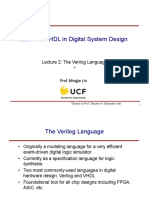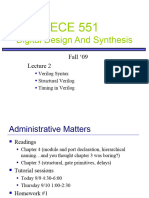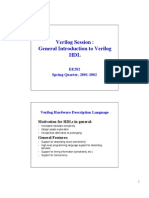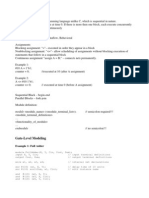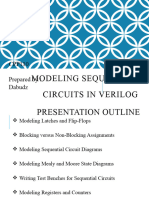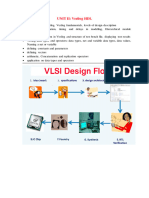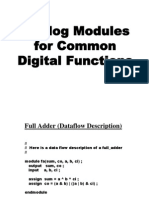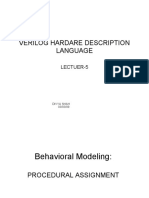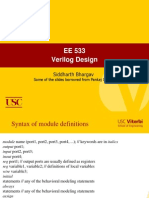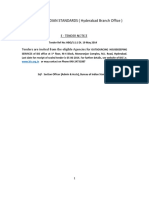0% found this document useful (0 votes)
37 views9 pagesASIC Assignment - 2
The document contains code examples and descriptions of three Verilog concepts:
1. A 1010 sequence detector module and testbench that detects a 1010 bit pattern on its input and changes states accordingly.
2. A vending machine module that dispenses an item when both an x and y input are triggered, changing the state and output each time.
3. A traffic light module that cycles through red, green, and yellow light states with each clock cycle.
Uploaded by
Deepak TiwariCopyright
© © All Rights Reserved
We take content rights seriously. If you suspect this is your content, claim it here.
Available Formats
Download as DOCX, PDF, TXT or read online on Scribd
0% found this document useful (0 votes)
37 views9 pagesASIC Assignment - 2
The document contains code examples and descriptions of three Verilog concepts:
1. A 1010 sequence detector module and testbench that detects a 1010 bit pattern on its input and changes states accordingly.
2. A vending machine module that dispenses an item when both an x and y input are triggered, changing the state and output each time.
3. A traffic light module that cycles through red, green, and yellow light states with each clock cycle.
Uploaded by
Deepak TiwariCopyright
© © All Rights Reserved
We take content rights seriously. If you suspect this is your content, claim it here.
Available Formats
Download as DOCX, PDF, TXT or read online on Scribd
/ 9







